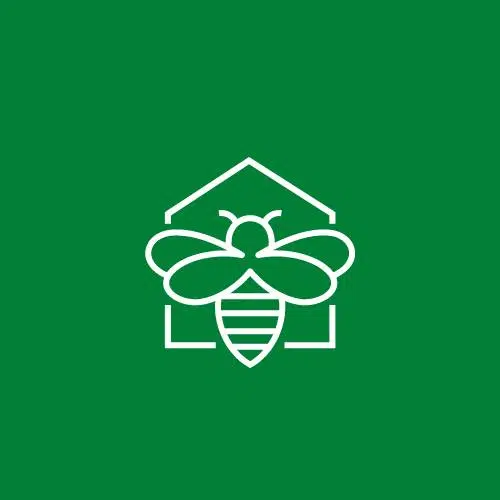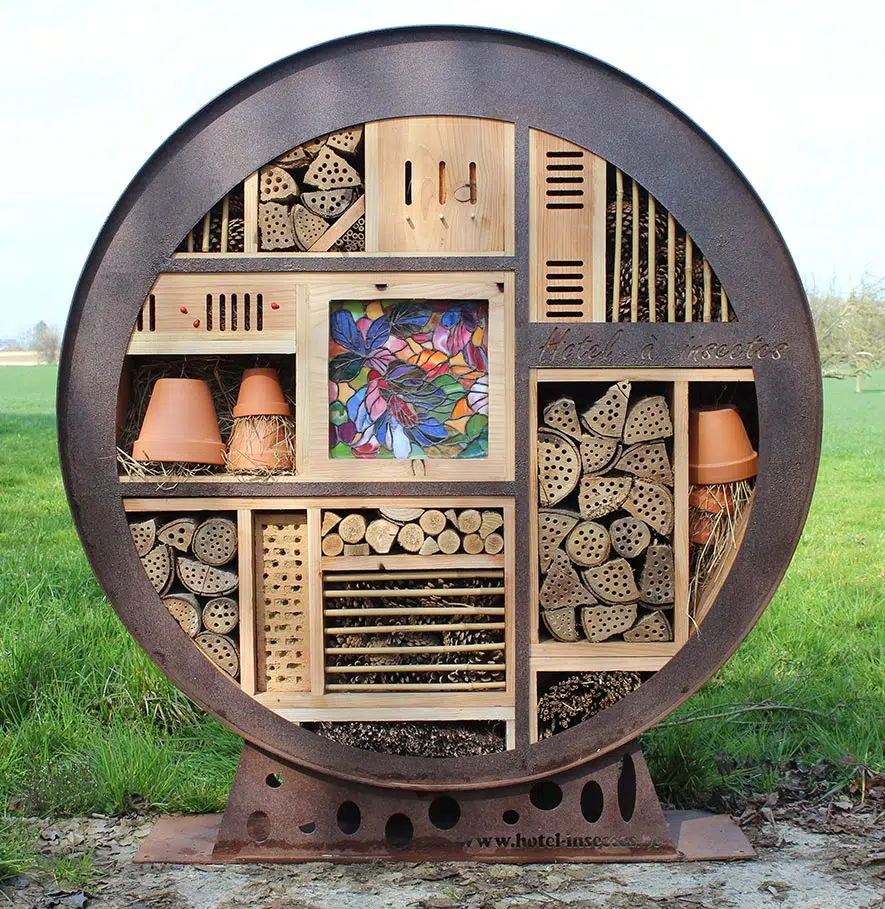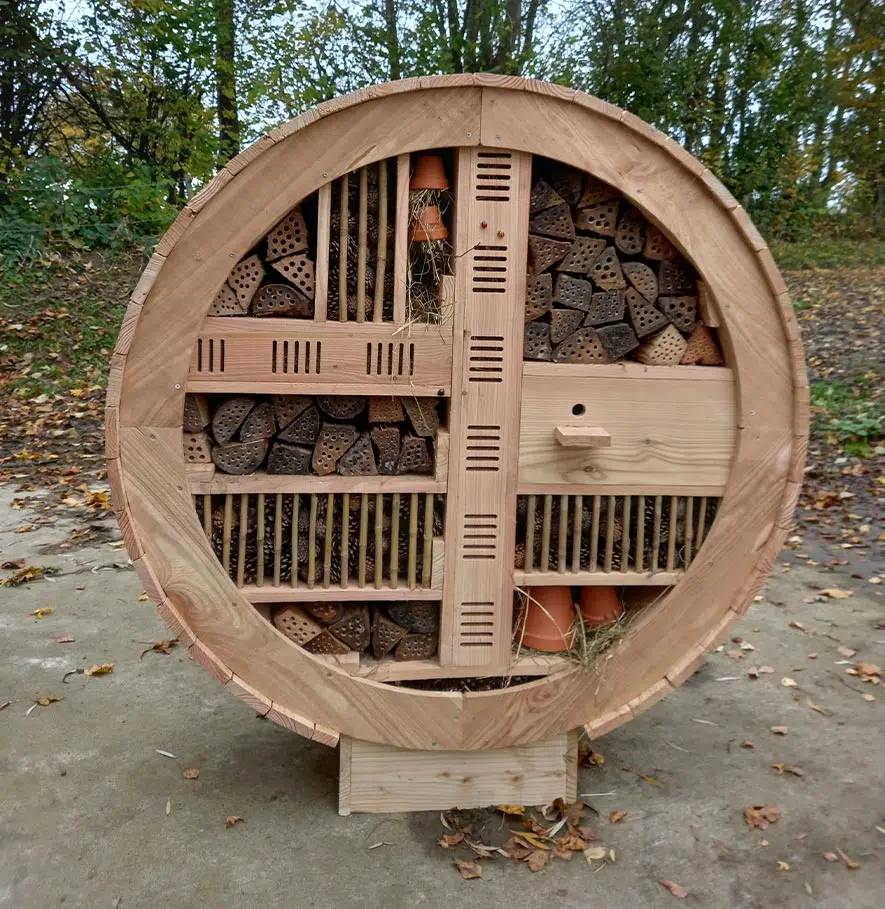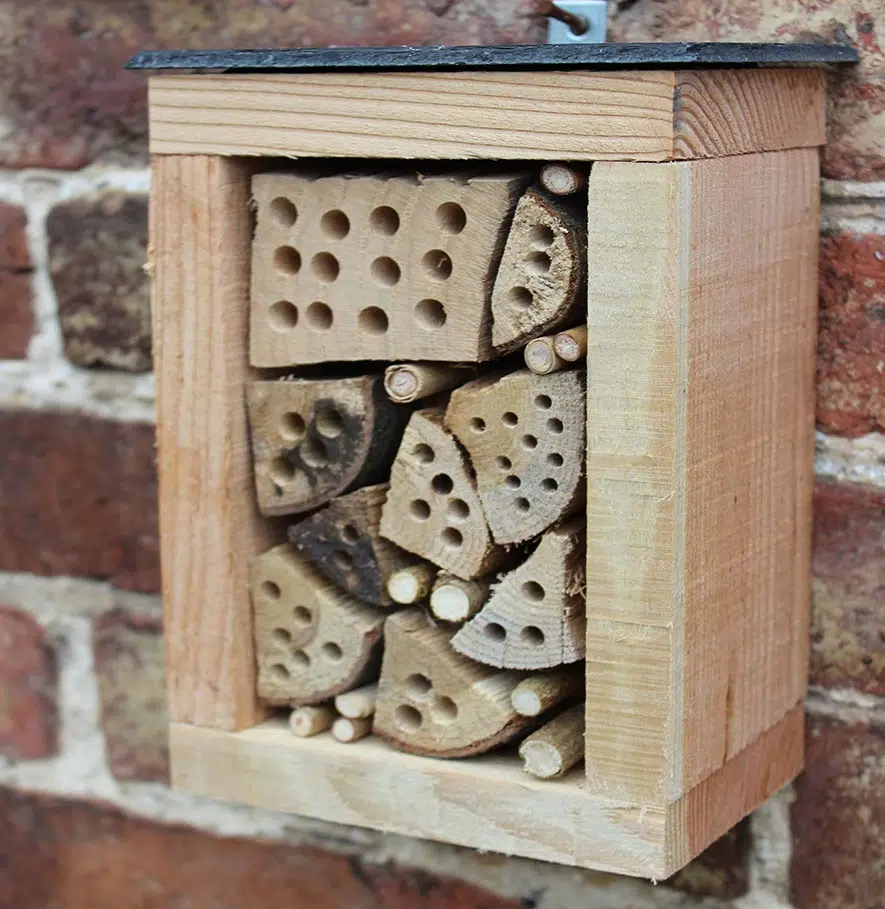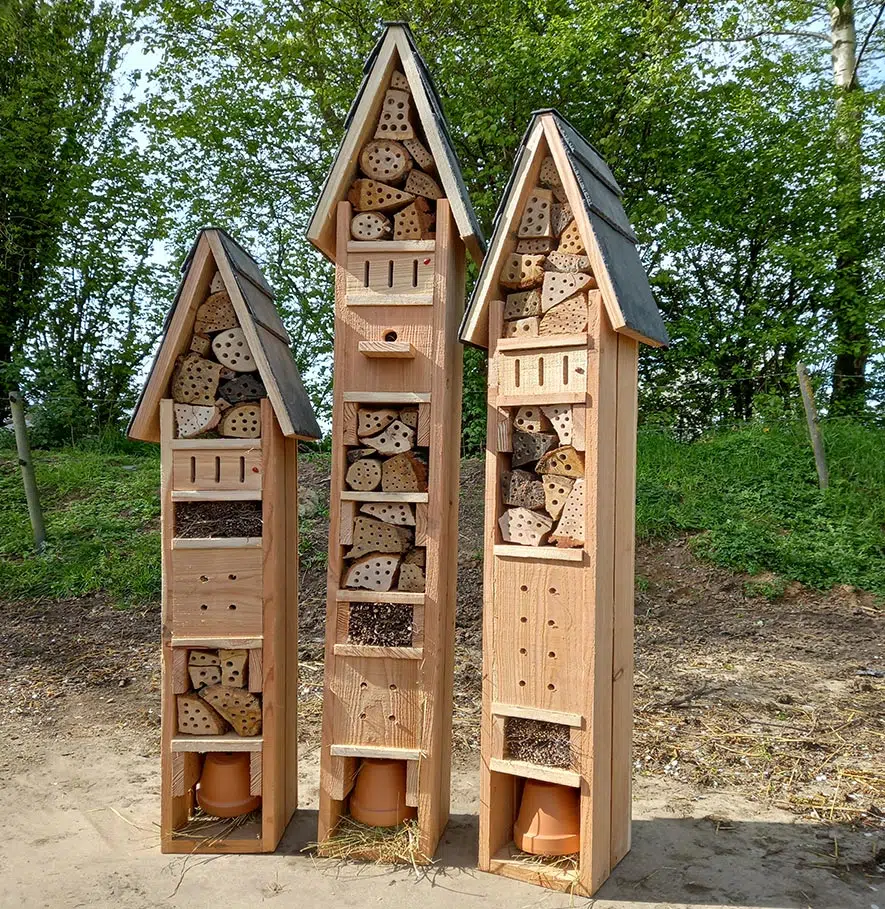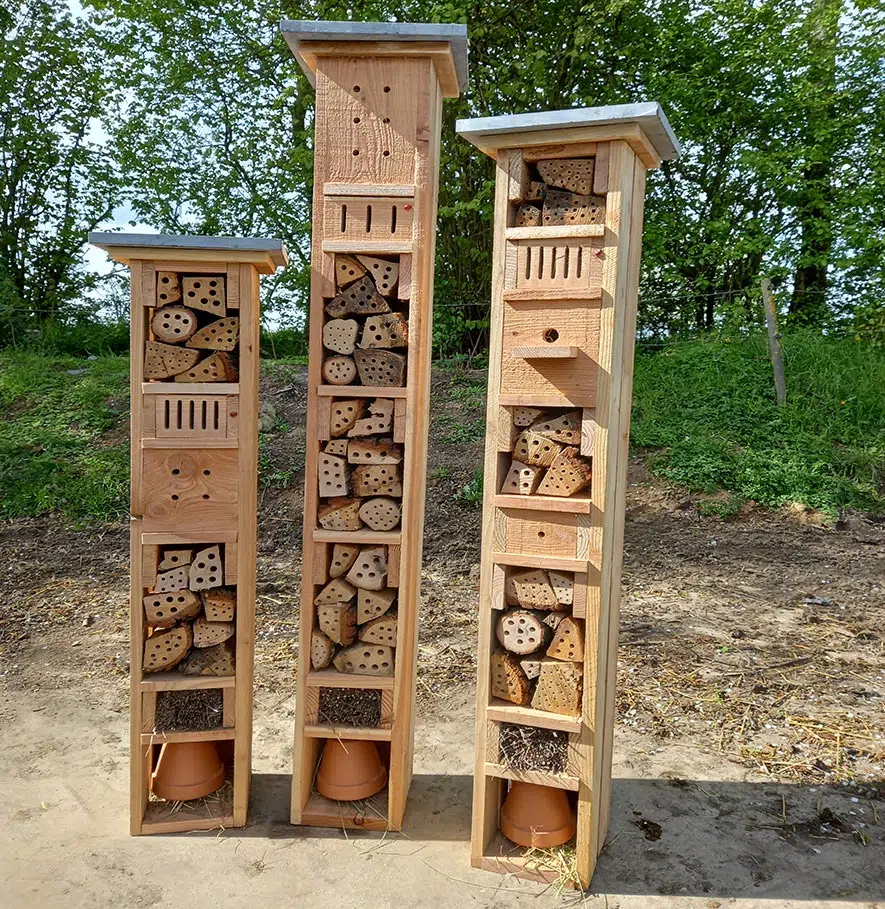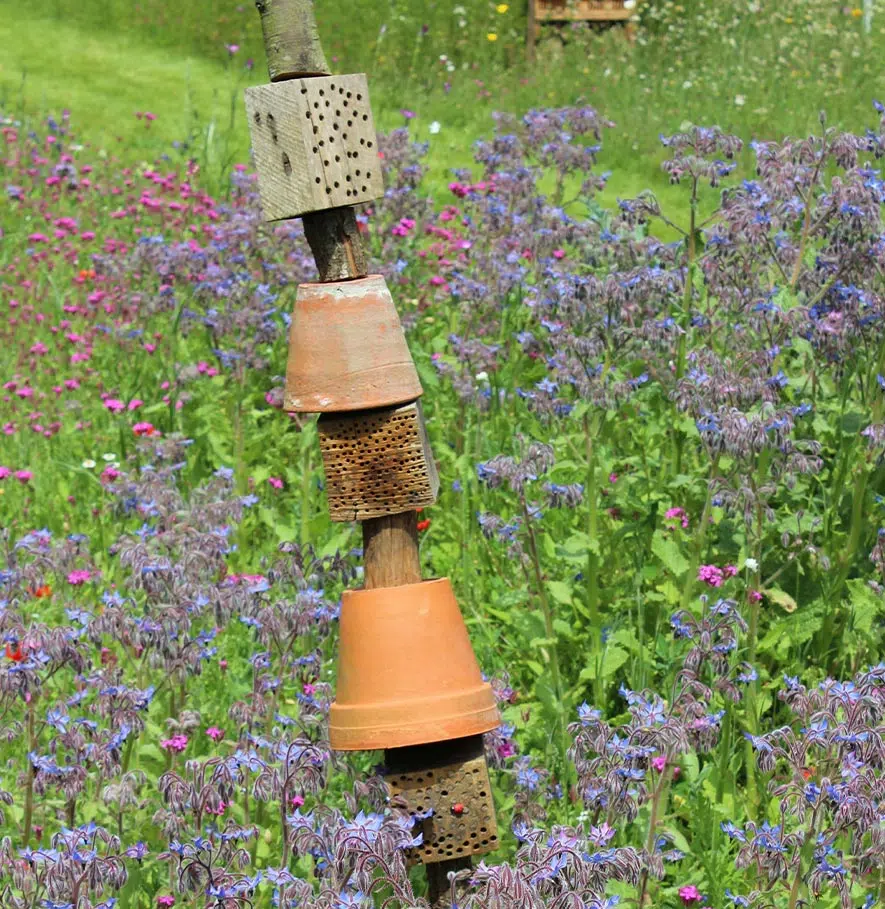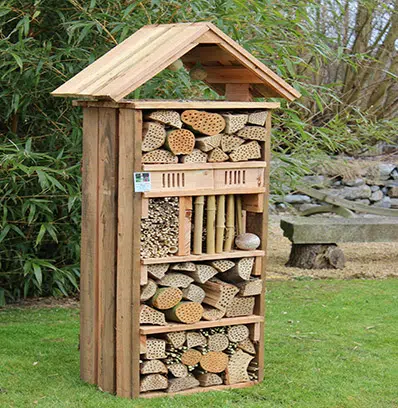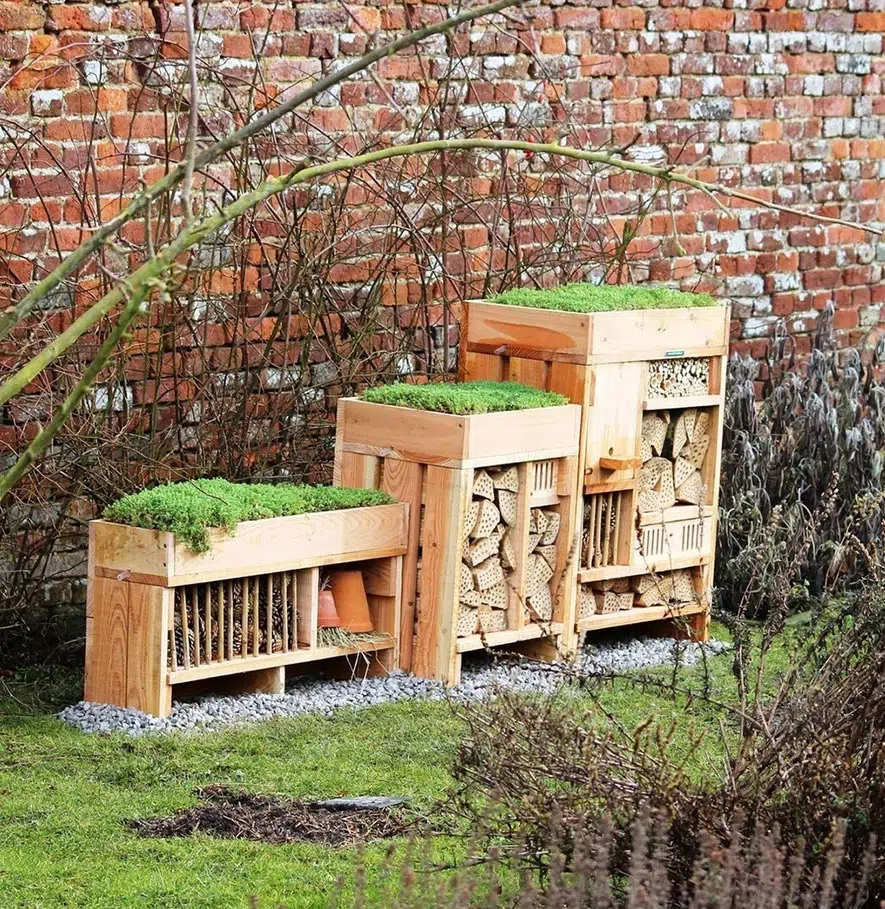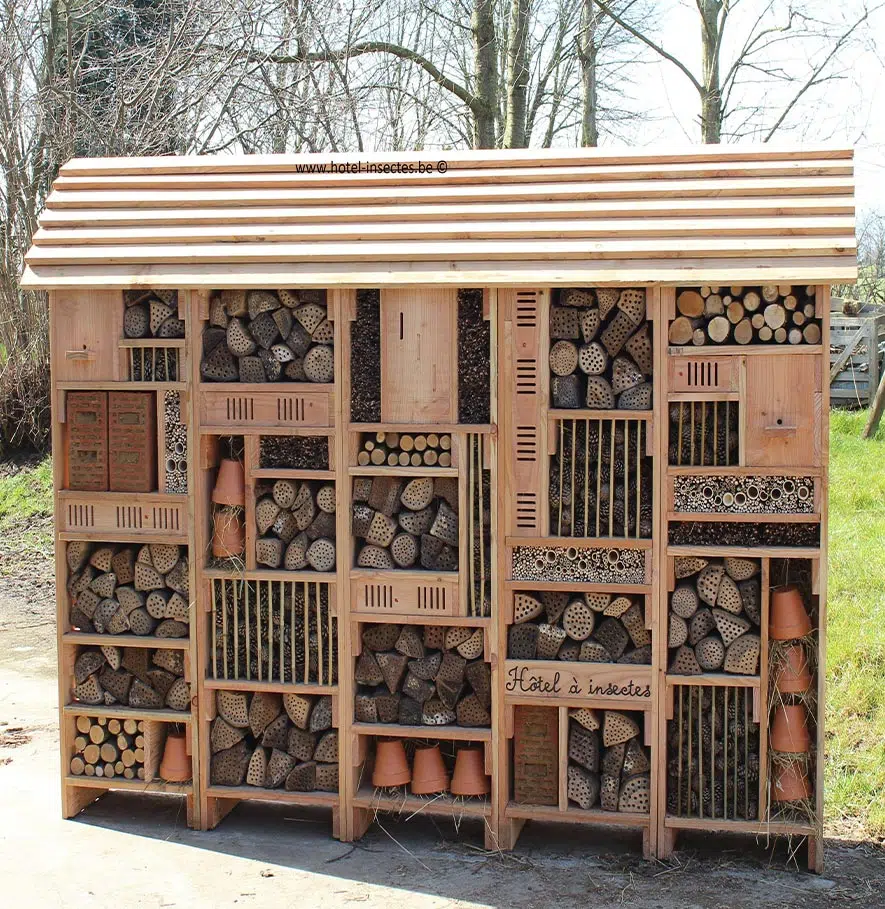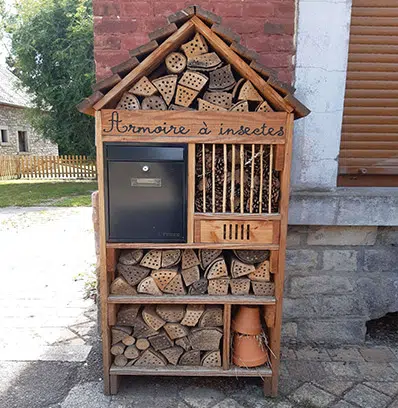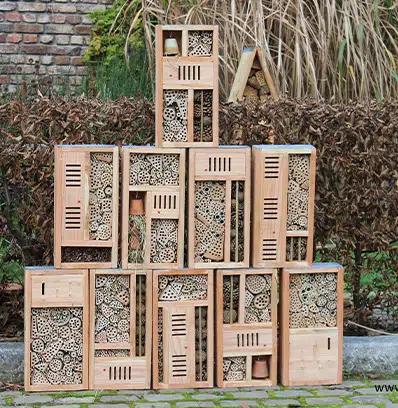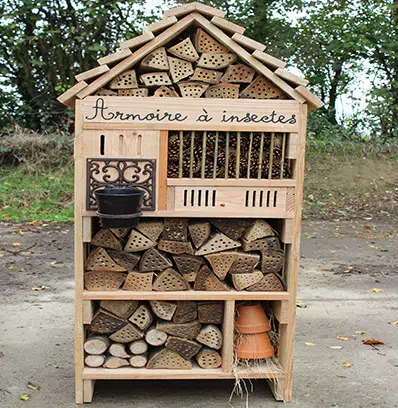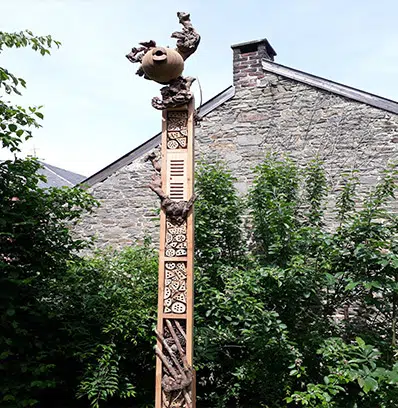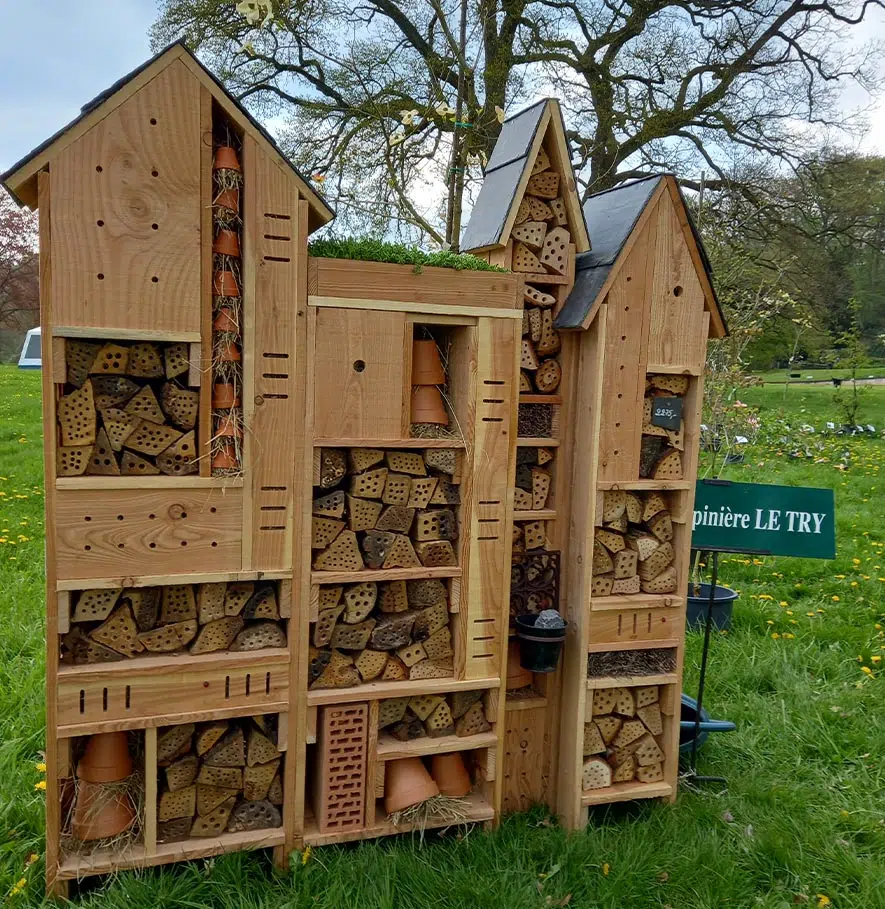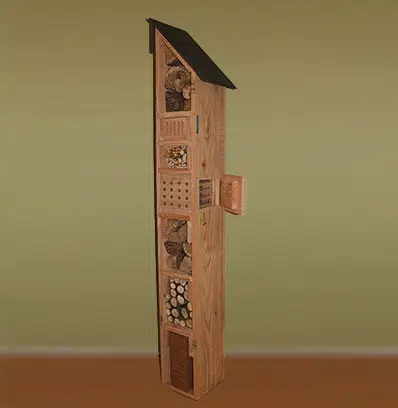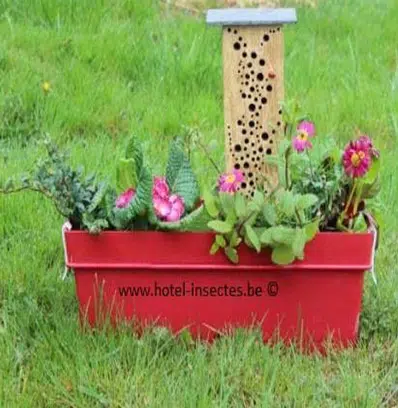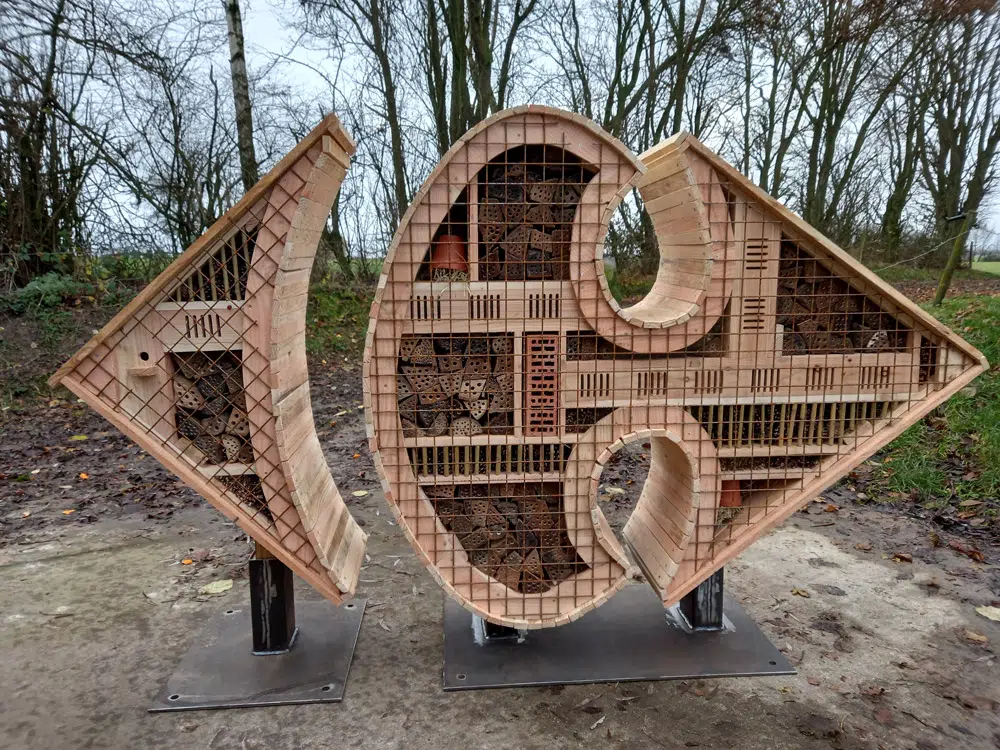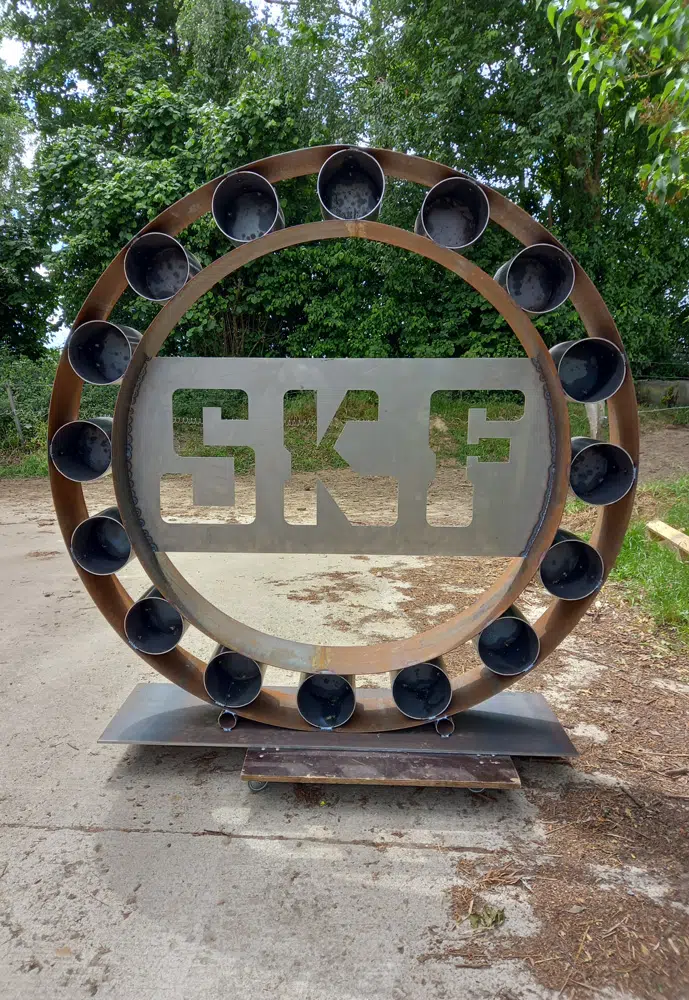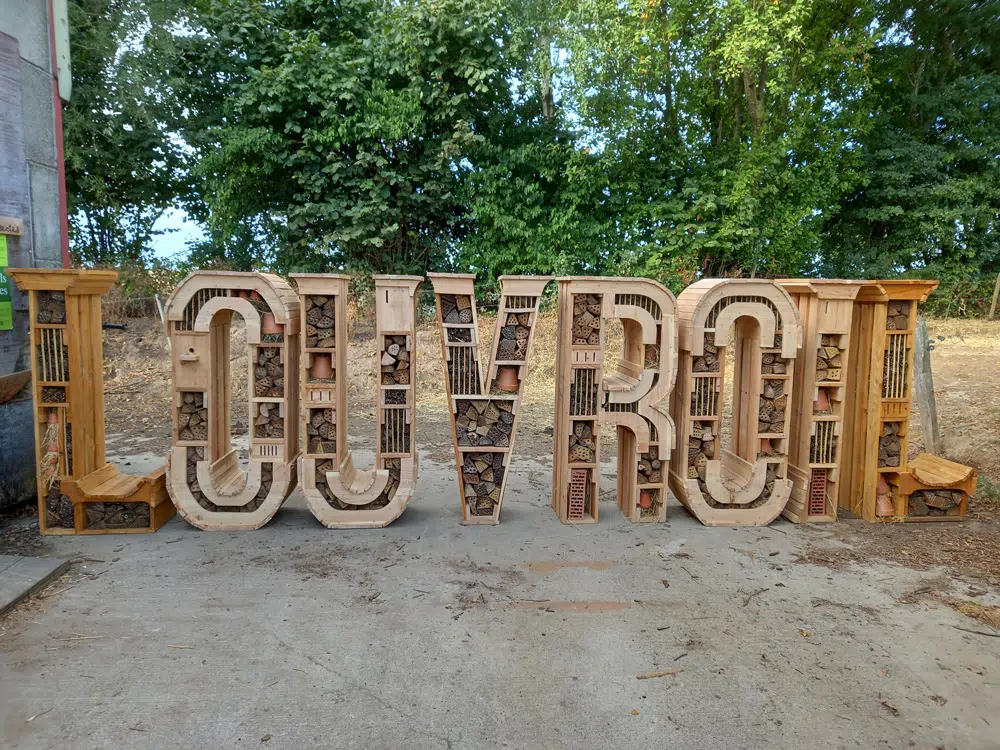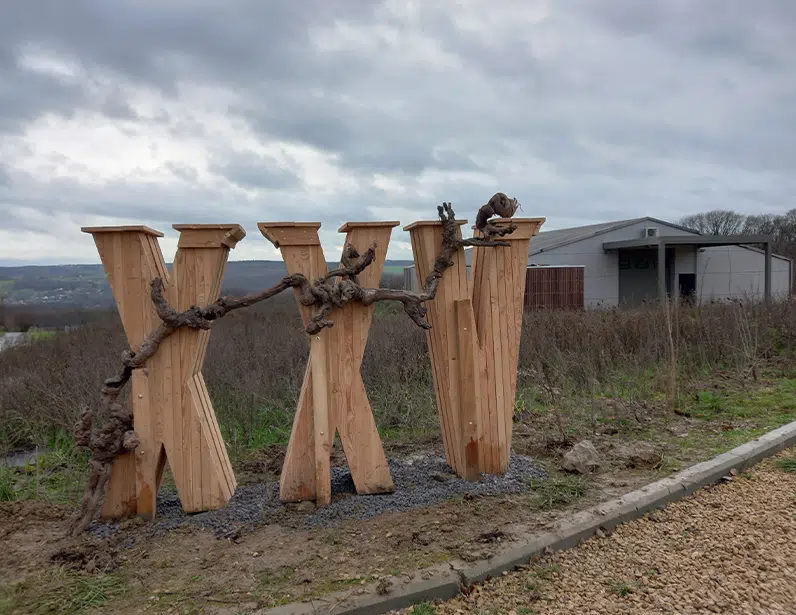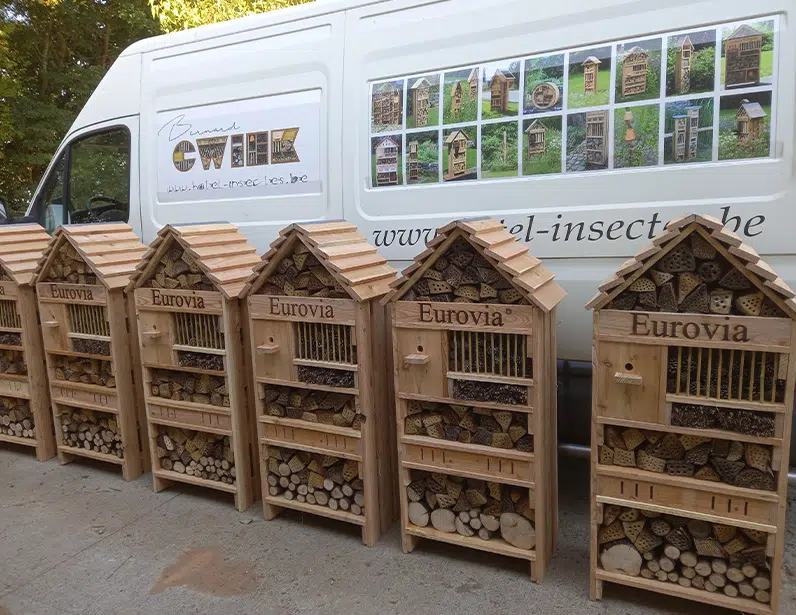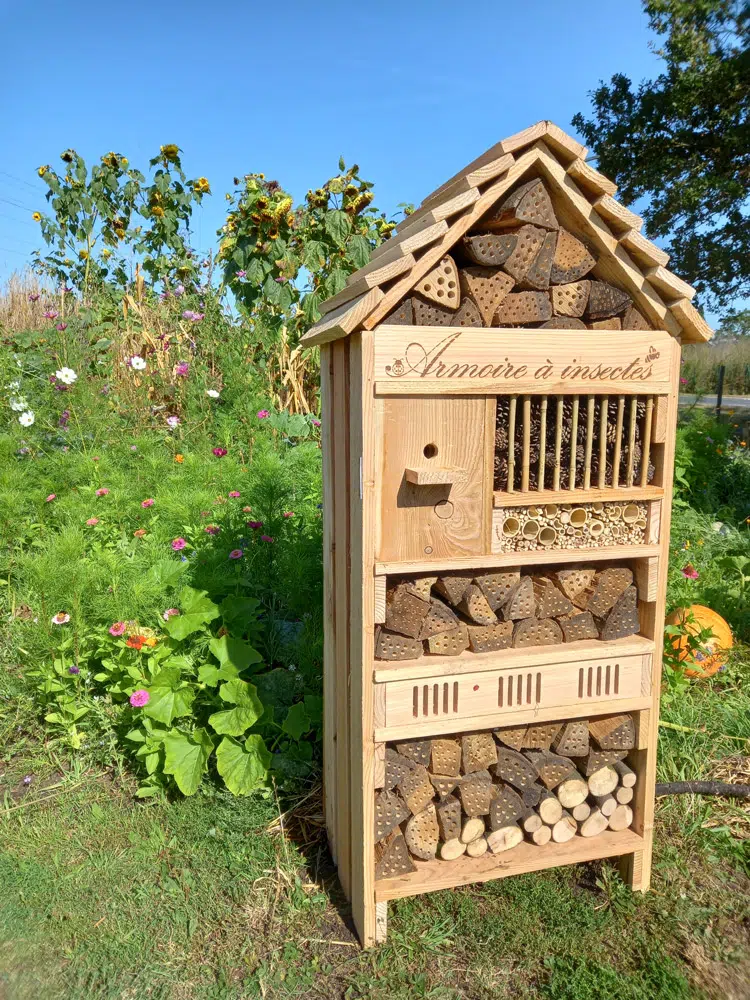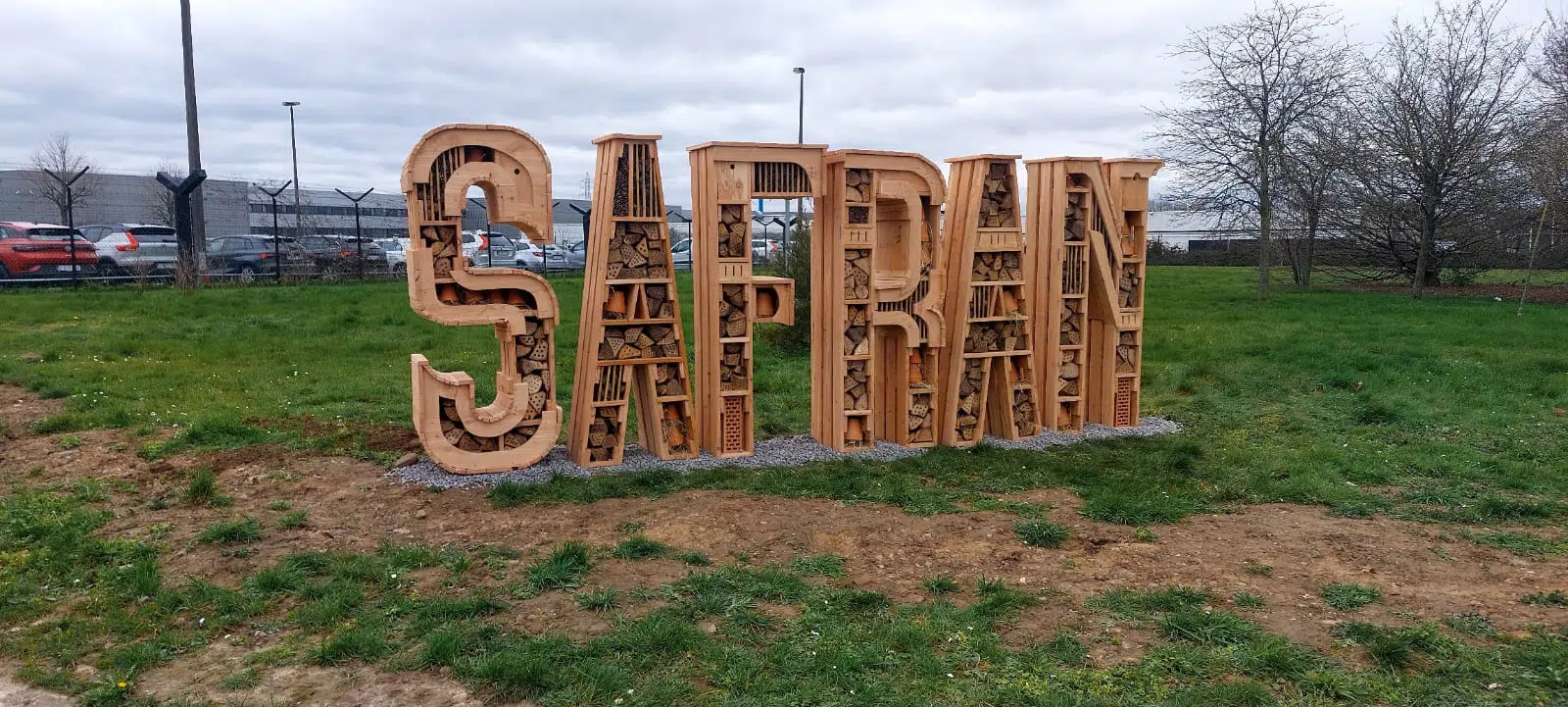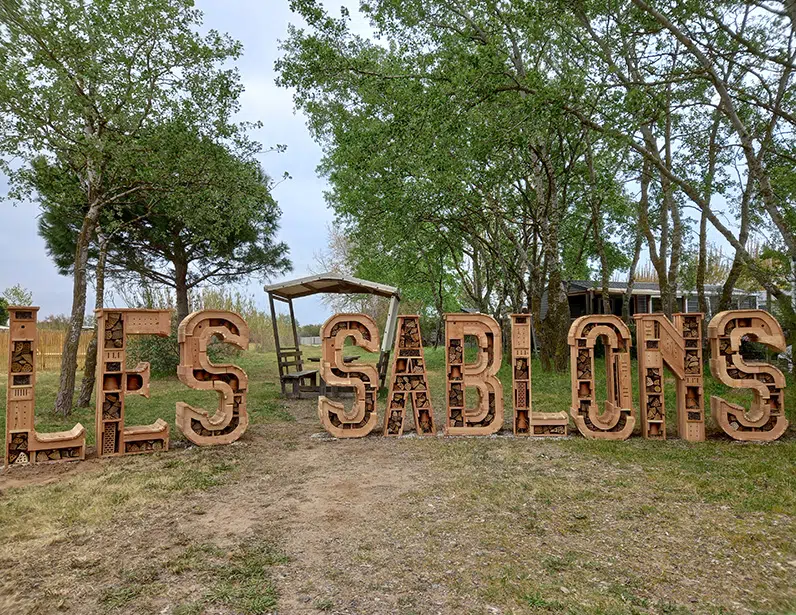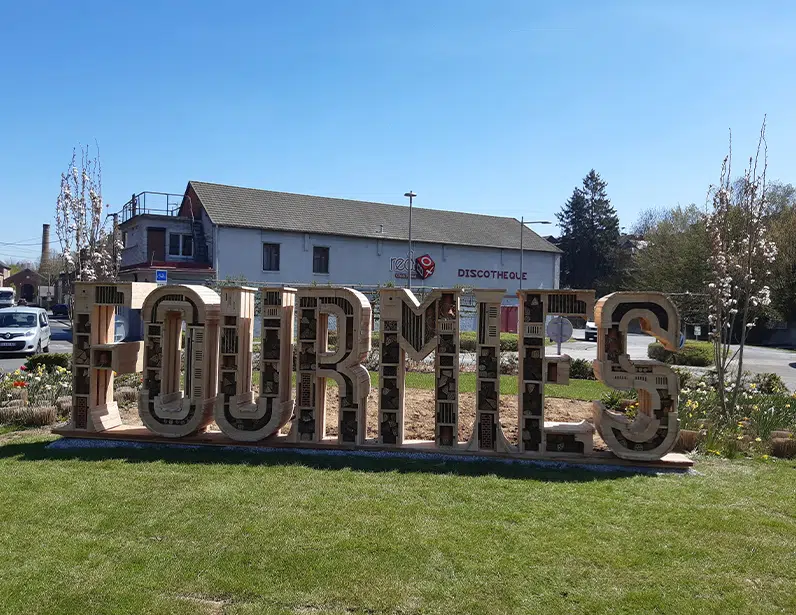Insect
hotels
Our Insect Hotels conserve biodiversity, promote pollination and enhance your image.
They trust us
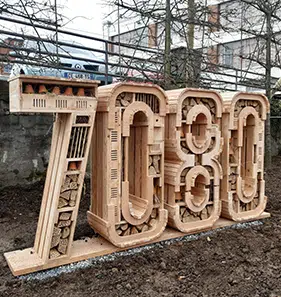
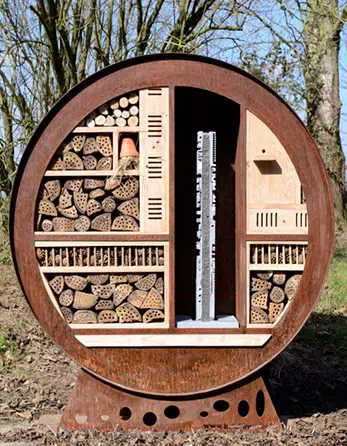
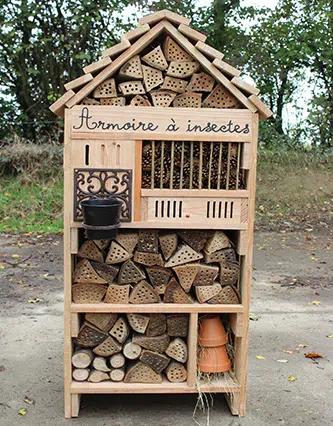
Sustainable hotels
Our hotels are designed to last for many years in your garden. They are handmade from FSC-certified larch planks and fitted with a variety of natural materials such as wood (oak, hornbeam, beech, etc.), hollow stems (miscanthus, bamboo, elder, etc.), hay, leaves, moss and pine cones.
We avoid the use of impregnated pine boards and elements from exotic countries to ensure that our hotels blend in better with your surroundings. What's more, our bespoke approach allows you to benefit from personalised projects that are tailored to your specific needs.
Our approach
Tailor-made solutions.
01 / Contact us
Contact us to discuss your insect hotel project. Our team is ready to listen to your ideas and answer any questions you may have.
02 / Analysis & design
After analysing your needs to create a unique insect hotel, our expertise will guarantee a design adapted to your environment.
03 / Design, quotation and drawing
We'll provide you with a detailed quotation and a drawing of your future insect hotel. Each proposal is tailored to your specific requirements.
04 / Delivery (and/or installation)
Once your insect hotel is ready, we organise delivery and in some cases installation. Our service includes careful and professional installation.
Transform your garden into a thriving ecosystem by welcoming a variety of beneficial insects with our innovative insect hotels. Our hotels provide safe and comfortable shelter for pollinators, natural pest predators, and beneficial insects, while enhancing your outdoor space.
Contact us
Hotels
Insects
Biodiversity
Natural pollination
Sustainable landscaping
Hotels for bees
Development of green spaces
Ladybird hotels
News
New publications
Discover the latest news and updates from our company dedicated to creating insect hotels, biodiversity conservation in action.
What they say about us
Magnificent creations. Artistic and useful for nature. Very friendly welcome from a
Passionate.
François Lepot
Large selection of insect cabinets.
Extraordinary service and great professionalism!!!!
Pascale Manfroy
A craftsman who's extremely passionate about his work and offers highly original and complete insect hotels in terms of the fauna they can house. And best of all, they last! I've already placed several orders for a hotel and boxes, and the result in the garden is just magnificent! This spring, it's a pleasure to walk past them and see the insects that come and go, especially the solidarity bees! I've fallen for it again and will be adding more elsewhere in the garden 🙂
In short, if you want a quality product, I recommend Bernard Cwiek's hotels! 👍👌🌿🐝🐞
mass1387
It's a totally original initiative!
Yves PIERRE
The insect hotel I bought in La Ferté: I love it!
Terres en Mirande
Nicole Bouyssou
FAQ
Frequently asked questions
An insect hotel is a structure that provides shelter for garden helpers, i.e. pollinating insects such as wild bees and bumblebees, as well as aphid-fighting insects such as lacewings and ladybirds. This avoids the use of insecticides. It has 2 main functions:
- Wild bees are welcomed at the right time of year, from March to October, to lay their eggs in the various areas set aside for them.
- To welcome overwintering insects November to February. There is therefore no right time to install an insect hotel; however, but you will need to wait 1 year for all the hiding places to be occupied.
As well as providing nesting and egg-laying places for a variety of insects, an Insect Hotel is particularly useful for observing the comings and goings of bees. What's more, the aesthetic appeal is undeniable. We use natural materials, including larch, to make the "container", which will turn grey over time to blend in perfectly with your garden.
Insect hotels are primarily for wild bees. The spectacle of their incessant manoeuvres to occupy the various shelters is captivating. The bees first enter the cavities 'forwards' to make sure they are functional. Once they have found a suitable space, they turn around to lay their eggs. Once the egg is, the bees set off in search of pollen, which they carry on their hind legs. By crawling back into the cavity and scratching their feet, they deposit the food they have collected, thus contributing to pollination. Each egg is then separated by a partition of earth, plants or resin, depending on the type of bee. When the cavity is full, they close it permanently. As well as bees, the insect hotel provides a winter refuge for a range of other insects. Ladybirds, lacewings, gendarmes and earwigs, among many others, find a warm place to spend the winter.
There is no ideal location for an insect hotel. However, I recommend placing it near a high-traffic area, so that it can be observed regularly. It is important to note that the wild bee, which does not have a stinger, poses no risk of stinging. To optimise the orientation of the insect house, it is best to face east or south.
With 17 years' experience of designing and building insect hotels, we don't use sawdust, pine or other bark, chestnut shavings, twigs or small pieces of wood, or moss... which are just cheap "fillers" of no interest to insects.
1) Untreated natural and sustainable materials.
2) Structure in 2 cm thick native wood (larch) from sustainably managed forests and PEFC certified.
3) TThe hotel will be filled with a combination of materials that provide cavities for wild bees, such as :
- Oak or hardwood logs (PEFC certified) drilled to various diameters (from 0.4 to 1.2 cm), with clean holes and no splinters. Fir wood is therefore prohibited.
- Hollow or pithy stems (such as elder, bamboo, reed, miscanthus, raspberry, etc.).
4) The hotel will be filled with a range of materials that provide niches and shelters for other beneficial insects, such as earwigs and ladybirds, adapted to their way of life.
The insect house is made from larch, a naturally durable class 4 wood that does not rot in water, and requires very little maintenance to ensure its longevity. For optimum installation, we recommend placing it on a bed of gravel, as larch does not tolerate direct contact with the ground. As far as maintenance is concerned, a simple but essential operation is required at least once a year: the removal of spider webs. The insects that are attracted by this insect "restaurant", can settle there. It is important not to let the webs grow thicker than 2 or 3 years, as they can become an insurmountable obstacle for the bees. You don't have to dismantle anything ,just use your hand or a feather duster to gently remove the cobwebs, thus preserving the insects' access to their refuge.
Customisation of your insect hotel is a priority for us. Whether you're aiming to attract pollinators or aphid-eaters, or to create a refuge that blends in with your surroundings, we're here to meet your needs. Our range of customisation options includes a variety of materials and aesthetic elements, such as ceramics, fountains, stained glass and steel. The possibilities are endless when it comes to designing an insect hotel that not only fulfils its ecological function, but is also a unique work of art.
Ordering a part from our workshop is a simple and straightforward process. First of all, get in touch with us either by e-mail or by telephone. Then, depending on your needs, we'll direct you to one of our sales outlets if a 'standardised' model meets your requirements. If not, we will provide you with a personalised quote and/or a sketch. A visit to your garden may be necessary to better understand your expectations and adapt our design to your space.
There are several ways to pay for your purchases: bank transfers, Bancontact payments directly at the workshop, or cash transactions.
Delivery times for our projects vary according to specific requests and the workload already in progress in our workshop. These delays can fluctuate from 1 to 6 months. For example, a project involving a bluestone fountain integrated into a steel structure could take longer. In the case of this request, which requires the intervention of other craftsmen, the duration of the project may be affected.
We are the only company in the field of designing, building and selling insect hotels to offer a guarantee, which sets us apart in the market. This guarantee covers normal wear and tear for 15 years. With 17 years' experience in the manufacture of these structures, we have built up considerable expertise that enables us to ensure the high quality of our products. This long-standing experience is the basis of our confidence in offering this exceptional guarantee to our customers.
